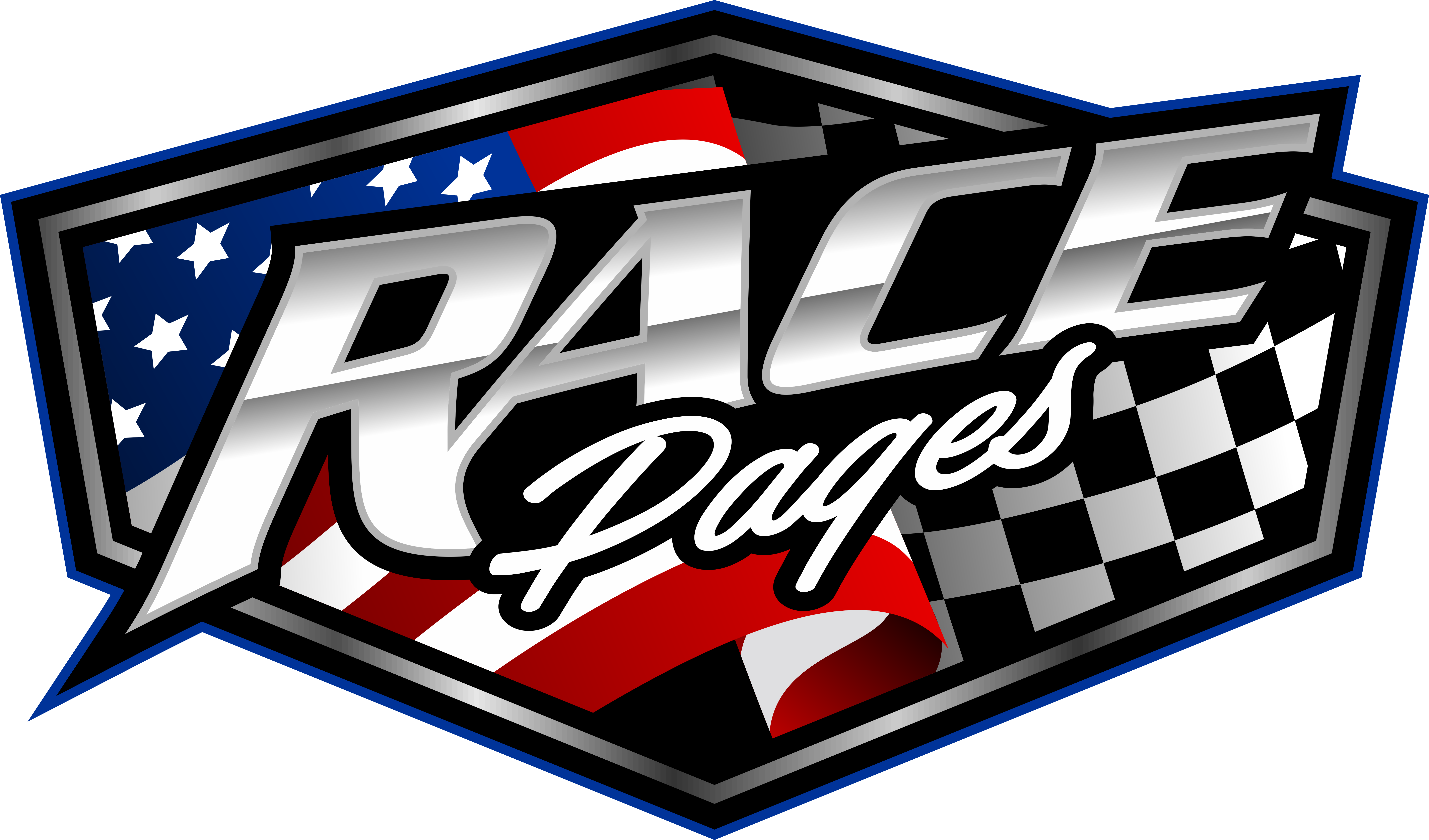It’s early on a quiet summer morning in rural North Carolina. The engine dynos spread out across race shops in the Mooresville Motorsports Center industrial complex have yet to start making noise for the day, but the gears in Greg Anderson’s mind are most assuredly spinning. The six-time NHRA Pro Stock world champion is getting ready to head to Charlotte Douglas International Airport to fly off to Seattle for the NHRA Northwest Nationals at Pacific Raceways, where the KB Titan Racing rigs and race cars are already set up and ready for the weekend.
Editor’s Note: This story originally appeared as the cover story in DI #196, the State of Drag Issue, in Sept./Oct. of 2025.
But just because the team’s multi-car operation – including Anderson’s HendrickCars.com Chevrolet Camaro – is 2,800 miles away doesn’t mean Anderson can sit idle at the shop. There’s always something to work on when you’re tasked with creating horsepower for several of the most competitive cars in a class where, as Anderson says, “horsepower is king.”
“My day-to-day is to get here as soon as I can every morning and work as long as I can on trying to find one more horsepower, two more horsepower,” Anderson says from the KB Titan Racing shop, just around the corner from Mooresville Dragway. “You think about it nonstop, and anything you think about, you show up at the shop the next day and you’re trying to build that widget to try and find yourself another horsepower.”
This is a mindset Anderson has developed over the course of a career that stretches back decades. He spent 12 years racing with “The Professor,” Warren Johnson, where Anderson focused on the firewall back. When he went out on his own with team owner Ken Black in 2001, he hired Rob Downing to be his crew chief, freeing him up to learn how to work on engines. Jason Line, a past NHRA Stock Eliminator world champion, joined the team and further accelerated Anderson’s engine education.
“Ever since 2001, I turned in that crew chief or mechanic’s wrench, and I became an engine builder,” Anderson says. “Now it’s been 20-some years and I’ve learned a ton and I’ve really enjoyed it. It’s been two different careers, one as a car guy and the next as an engine guy, and I don’t know which one I like better.”
The pursuit of even miniscule gains in horsepower is never-ending for Anderson and his colleagues at KB Titan Racing, which has grown and evolved just like Anderson has. It started as a single-car team with Anderson as the driver and expanded to a two-car program in 2004 with Line earning Rookie of the Year honors and a second-place finish to Anderson. The team later started leasing engines and complete Pro Stock operations to other drivers. Line retired from driving at the end of the 2020 season and gradually stepped away from the team to pursue his own business. A new chapter for KB Racing began when KB merged with Titan Racing Engines to form KB Titan Racing with partners Eric Latino and Jim Whiteley.
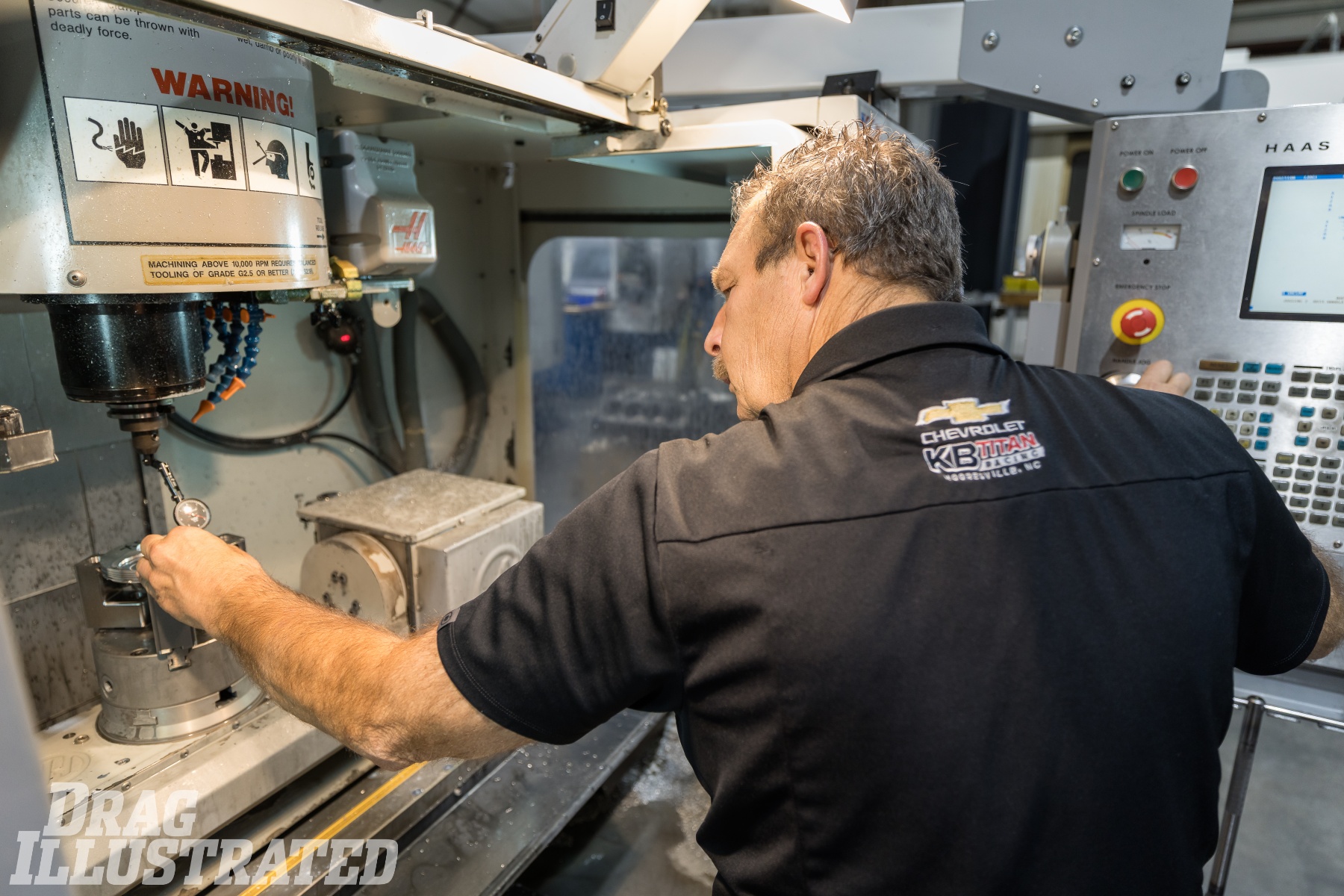
KB Titan is now home to five house cars and two engine leasing customers. That roster includes Anderson, Latino, 2024 championship runner-up Dallas Glenn, 2023 U.S. Nationals winner Matt Hartford, five-time winner Deric Kramer, and former Pro Stock Motorcycle rider turned recent first-time Pro Stock winner Cory Reed. The lineup also includes two rookies: Matt Latino, Eric’s son, as well as Cody Coughlin, who came to Pro Stock after success in the circle track world.
At this point in the season, KB Titan drivers occupy nearly all of the top 10 spots in the NHRA Mission Foods Drag Racing Series Pro Stock points standings. Anderson and Glenn met up in the final rounds of the first three races of the 2025 season, with Glenn winning the season opener in Gainesville and Anderson taking back-to-back wins at Phoenix and Pomona. Glenn then won both Four-Wide Nationals in Las Vegas and Charlotte, while Anderson finished third and second in those final quads, respectively. Anderson added back-to-back victories at Epping (over rival Erica Enders) and Bristol (over Glenn), then Reed scored his first career Pro Stock win at Norwalk with Glenn in the other lane.
That performance is Anderson’s reward for the hours he puts in at the shop between races. He’s there from 7:30 or 8 in the morning to around 7 p.m. six days a week. And that’s not counting all the hours he spends thinking about racing while he’s away from the shop. It’s an effort bordering on obsessive, but it works.
“It’s a sport and a class where you can control your own destiny,” Anderson explains. “If you don’t put that effort in, you’re probably not going to get much back out of it. If you do put a heck of an effort in, you’ve got a good chance of getting more out of it. I look at that as sort of being able to control your own destiny. If you find five horses this week, you’re going to make your chances to win next week a heck of a lot better. The more you can work at it and the more effort you can put in, usually the luckier you get, as they say.”
Around 50 percent of Anderson’s time at the shop is spent on the engine dyno. He took over the dyno operator role from Line when he stepped away. Anderson also machines a lot of the parts that go into the engines and handles most of the piston work.
“It’s a very busy role, but I love every bit of it,” Anderson says. “But pretty much everybody that works here in the KB Titan engine shop can do anything from top to bottom of the engine. They’re not necessarily the specialist that they can only do this part or that part. There’s three of us here that can run the dyno. There’s five of us here that can build an engine from oil pan to fuel injection system.”
It’s a group that wears many hats, and Anderson is the prime example of that. At times he’s a team leader tasked with making the numbers make sense. Other times he’s a world-championship race car driver signing autographs for fans at the ropes. He’s also a teammate, a mentor, and a rival. But of all the hats Anderson wears in his role in the sport, it’s the engine builder hat that brings out something special in him.
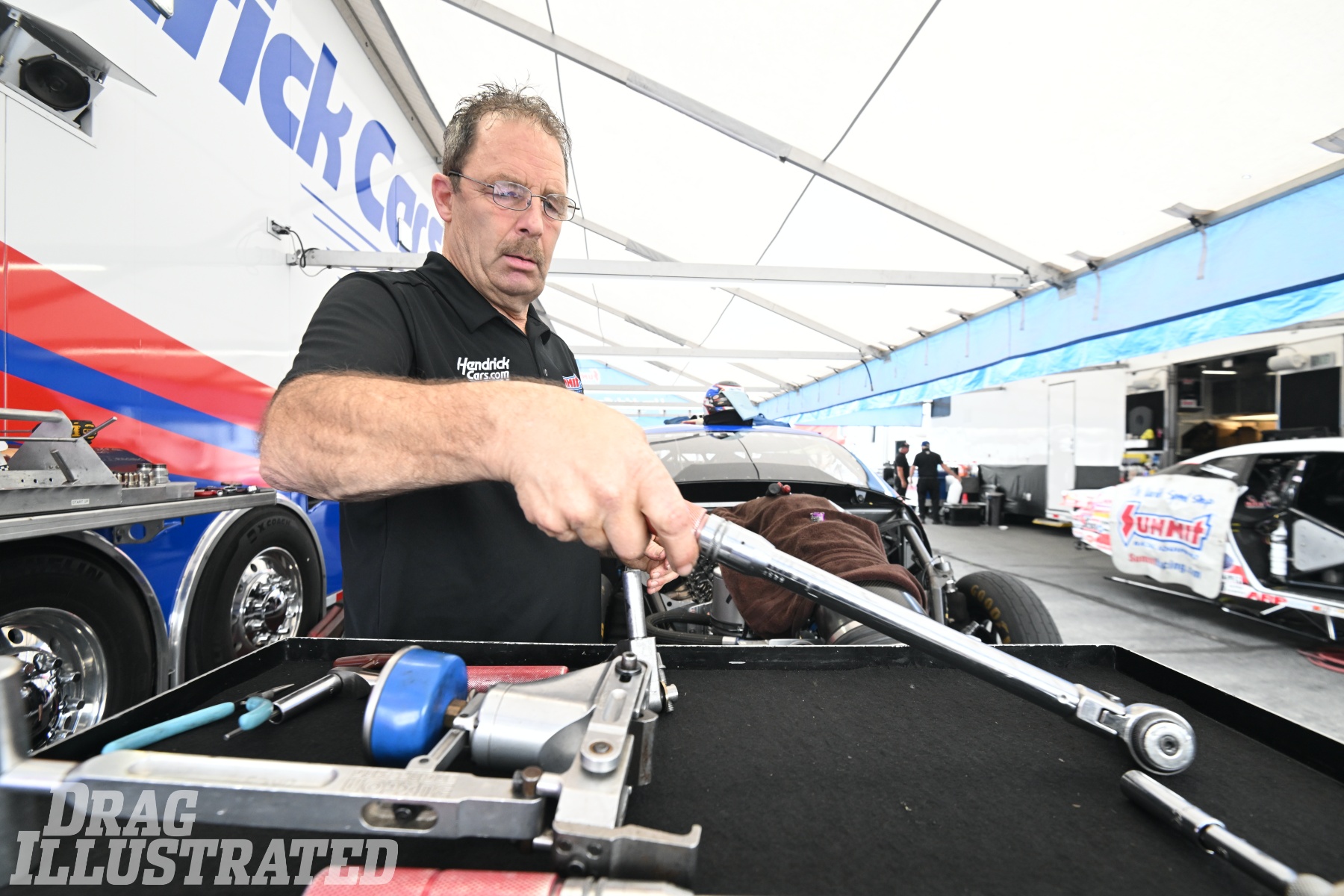
“In Pro Stock drag racing, the engine is king, and that’s what I love about it,” Anderson says. “There’s certainly three main ingredients that go into trying to win a race with these race cars. The driver has to do a great job, the car has to be perfect, and the engine has to run real good, but probably still the most important part of those three is the engine. That’s why I love Pro Stock.”
Anderson, now one of the most accomplished drivers not just in Pro Stock, but in the history of the sport, became just the second driver in NHRA history to hit 100 national event wins when he won the 2022 U.S. Nationals and most recently hit the 1,000-round mark on his way to winning the Thunder Valley Nationals this summer.
In this candid conversation, the Anderson reflects on those accomplishments, the state of Pro Stock, and the passion that still drives him after decades in the sport.
You’re only the second driver to hit 1,000 round wins behind John Force, who did it in 2008. How does that achievement represent your career in the sport?
Well, I guess it tells you I must be getting old to be around that long to do that (laughs). I never really kept track of anything like that. I never even thought of it, and I didn’t know anything about it until a couple of races before it happened. People started saying, “You’re getting very close to a thousand round wins.” It’s like, “What? A thousand what?” I didn’t really understand. And now that I think about it, that’s a lot of damn round wins. That’s pretty impressive.
Anytime you get in a rare record book alongside John Force, you’ve done something well, obviously. We all certainly consider him the guy that’s done the most for the sport, and no one will never get to the records that he’s had. So anytime I can be mentioned with him, that’s obviously a heck of a feather in the hat.
But like I said before, it’s great, it’s fantastic, it’s wonderful, but I’m not necessarily worried about the numbers like that. I worry about next week. Can I get to 1,002, 1,003? Just whatever it takes to win the next race, that’s what I live for. I’m kind of an instant gratification guy. I don’t look that far down the road, and I’ve said it a million times, your last win could always be your last win. You never know when you’re not going to be able to win again, so you’ve got to cherish every one of them. You’ve got to make them special and feel like they mean everything.
And that does for me. I still feel great. Every single race win I get, no matter what racetrack it’s at, I feel fantastic. That’s what does it for us and that’s what moves you on to the next one and takes you home and makes you work harder to try and make a better product so you can go back to the next race and have a chance to win that next one.

Being in that exclusive club with John Force, perhaps the most iconic drag racer of all time, how surreal is that?
It’s crazy. It’s absolutely crazy. There’s so many things that I don’t even consider myself even close to being on the same level as John Force, but people start talking when you do things like this, “You and John Force, you and John Force,” and I certainly don’t consider myself an equal, no way, no how, and I probably never will, but it’s still cool. It’s still something I can talk about when I finally do step out of the car and stop doing this. Then I can think about this stuff more and it’ll probably mean a lot more to me then. But as I’m still doing it, it’s just part of the deal it takes to win that next event. And that’s everything to me.
How rewarding is it to hit that thousand-round mark while competing in this modern era of Pro Stock with so many tough, young competitors?
Yeah, it’s definitely different now. I know it sounds like a cliché – this class gets tougher every year – but it does. In my opinion, it does. I was certainly around through all the days when Warren Johnson would win a lot, when Bob Glidden would win a lot, but the difference to me to back then is you had those two or three guys in the class that could win. Nobody else really could win, so it’s not like that anymore.
Bob Glidden or Warren Johnson didn’t rent engines and race cars the same as they were driving to guys that were 20-30 years younger than them. And that’s what we’re doing nowadays. We’re renting the same exact equipment that I’m racing, the same exact equipment that Erica Enders is racing. Her teammates all have the same car, the same engine, the same capability to win that she does, that I do, and that wasn’t the way it was years ago.
That’s the reason I think it’s tougher now, and obviously add on the extra years that I’ve got going for me and the wisdom or whatever you want to call it, that’s great, but I’d sure click my fingers in a minute and go back to that young attitude and that ability to be able to go out there and cut .00 lights and .010 lights like it’s nothing like these young kids can. I’d give anything to go back to that. I don’t necessarily have that in my playbook anymore. They tell me, “You’ve got to do it with experience and wisdom.” Well, what does that really mean? That doesn’t get you a better light. That doesn’t really get you much, I guess.
But a couple times this year, I’ve raced Dallas Glenn, one of the new young guns that’s just effortless at cutting great lights and being able to win races and he’s in the same equipment as me, but he’s got something in his book that I don’t necessarily have. He can actually go up there and red light. He can see that light that well and actually let the clutch out and be too amped up, too excited, and red light. And he’s lost twice to me this year in final rounds via just barely red lighting. And I’ve kind of chuckled at the finish line. That’s not a problem I have. I can’t necessarily red-light unless I just flat screw up. I can’t necessarily red-light.
I guess it’s a good problem, but at the same time it’s cost him two races too, so it’s a double-edged sword. I guess that’s the wisdom and the experience play. Just make sure you do the best you can and go down that racetrack. And a couple times this year it’s worked out good for me where he’s gone over the edge and he’s been red-lighting.
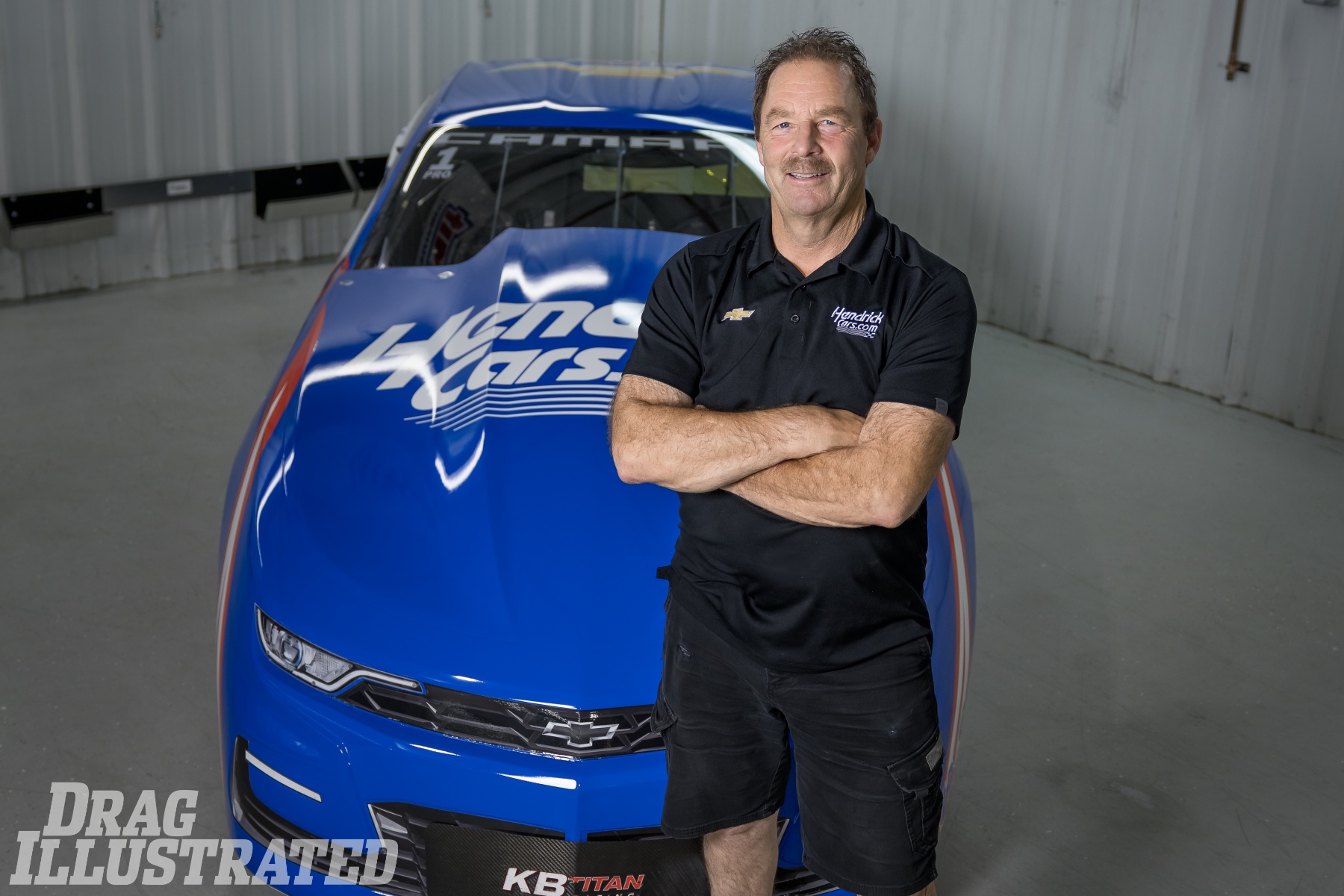
You talked about some of the guys you’ve raced over the course of your career – multiple generations of greats that you’ve raced against in Pro Stock. Who was your toughest rival or the one who pushed you the hardest?
There was so many over the years, but there were so many years of the Summit vs. JEGS deal, the me vs. Jeg Coughlin deal. I can remember so many just huge, huge races between the two of us. Obviously things change year after year, and Jeggy, he’s raced a long time, but he’s also taken breaks and stepped out for a year or two at a time and then come back.
In those years that he hasn’t been around, there’s been other people. I spent a lot of years trying to find a way to beat Dave Connolly. And then came along Erica Enders, and she got to the top of her game and got great equipment and I had a hard time beating her. So there’s been a few different nemeses, whatever you want to call them – tough competitors, ones that mean more. The latest one, obviously, has been Erica, without a doubt, but there’s been a lot of years over my career that Jeg Coughlin was that guy.
It changes as you go. The cool thing on my part is I’ve been through it enough to have several different arch enemies or nemeses – people that I felt could take care of me no problem, and I really feared when I went up there. That must tell you you’ve had a long career, and I’m sure there’ll be another one.
Maybe Dallas Glenn is the next one that I’m just going to get to the point where I struggle more than I can beat him and he’s going to beat me. You’ve just got to stay out there as long as you can, and that’s the beauty of drag racing. It seems that you can do it into your upper years.
It’s kind of funny, I have a teammate over there at Hendrick Motorsports in Kyle Larson, and we talk about it all the time, “Man, we need to get him in a Pro Stock car.” Tony Stewart is racing Top Fuel now. Kurt Busch has tried some Pro Stock. I need to get [Larson] in my Pro Stock car and see what he thinks of that. I floated the idea out there a couple times and the answer from him was, “Well, maybe when I turn 50. That seems to be a sport that you can do when you get old.” I’m like, “You little smart ass.” He goes, “No, I’m not ready yet. I’m still kind of at the top of my game in what I do and maybe when I turn 50 I’ll try to add drag racing.”
There’s probably some truth to it, but still, they don’t have that. They can’t be doing it over in NASCAR or IndyCar or whatever at 50-plus. We can in drag racing. I guess I picked the right sport.
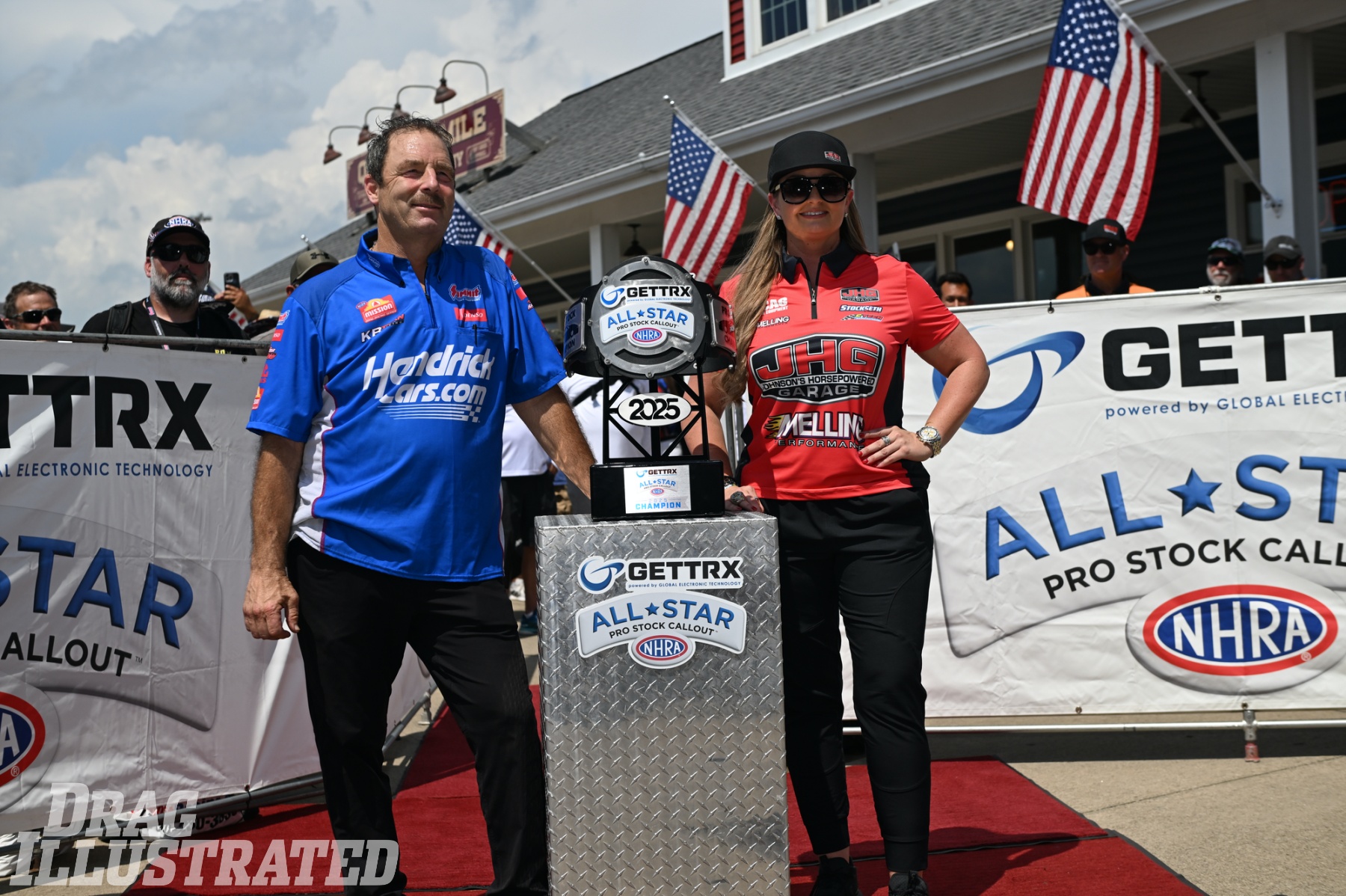
A lot of people see you or know of you as Greg Anderson, the Pro Stock driver, but you obviously also have a major behind-the-scenes role. What did you learn about managing people and running a team from Ken Black?
Yeah, he was the best quarterback you could ever imagine having. He didn’t micromanage. He didn’t try to step in and say, “Here’s what I want you to do. I want you to do that,” or “I don’t want you to do this,” and he pretty much let us run our own deal. All the years with Ken Black, we had to figure it out how to run this team, what was the best way to run this team, obviously financially, and trying to find ways to win races.
I learned a lot through all those years, basically because he pretty much opened the plate and said, “Here you go, boys. I’m going to be back here if you need me, and if we get into any problems, then I’ll start to make a decision, but other than that, you’re going to have to make the day-to-days and figure out what you want this race team to do and how you want it to look and where you go with it.”
How did that prepare you for Ken’s departure and the merging with Titan Racing Engines in December 2022?
It wasn’t necessarily a new experience when Ken moved on. We don’t have that great quarterback in Ken Black anymore, but I’ve got two great new guys in Eric Latino and Jim Whiteley. In my opinion, they’re just as great a quarterbacks as Ken Black was. I got very lucky for a second time in my career with the new ownership here, and the team has gotten better ever since we’ve done that.
We merged with the Titan team and gained some great employees there and we’ve flat gone forward. We put our egos aside and it wasn’t, “Well, you’re going to do it my way or I’m not going to do it,” or “I’m going to do it my way, I’m not going to do it your way.” There was none of that. We all pretty much just said, “Each of us can learn from each other and it’ll put a better product out in the end,” so the team just flat got better.
You’ve been partnered with a motorsports icon in Rick Hendrick these last few years. How has working with him helped your program?
The first thing is people don’t realize he started out drag racing, so he’s got roots in it and he’s got memories of it. Before he went NASCAR racing, he drag raced, and then he drag boat raced, so he certainly knows all about the sport and he gets a big kick out of it.
He loves to win. The man is not a guy that just wants to put his name on there because he likes to see his name on the side of the car or whatever. He likes to win. He loves trophies. He loves winning races. He loves teams that are run well. His ship is run very, very, very efficiently over there. His complex is beyond belief – the quality and just the way that all the employees act and operate, the way they talk about him. It’s just a fantastic organization and it’s incredible the magnitude of it.
Probably one of the biggest things he’s done for me is he’s offered any assistance. We can walk in the door over at the Hendrick complex any day, any time we want, and ask for help. Things that we don’t have here at KB Titan, obviously they have over there. They’ve got way more resources than we have. It’s been a great deal as far as resources. Anytime we get in trouble or we have a problem that we can’t solve, we can run right across town and get with all the engineers that he has on staff over there and hopefully solve our way through that problem. The open-door policy that he’s had with us, “Everything I have over here is yours to use,” has been a huge help to me.
But on top of that, the guy’s just probably the coolest guy I’ve ever met. He’s really a neat dude and I love the fact that he loves to win. That’s me. I don’t do this just to go out there and have fun. I don’t get the biggest kick out of driving a race car down the racetrack and don’t care whether I win or lose. I care if I win or lose. That’s everything to me and it is to him too. It’s been a great partnership and I’m just proud to wear that brand on the side of the car. It just means a ton to me.

You’ve talked about your role as a teacher for some of these young drivers coming in. Did that come naturally for you or is that something where you’ve had to learn how to be that teacher?
Well, if you go back to when we first started this KB team and I first got the opportunity to drive Pro Stock full-time with Ken Black, the first year or year-and-a-half, I was alone and it was all about Greg Anderson. Then came along Jason Line and he became my partner in our second operation. I won a lot of races over the years, but so did he. I basically had to learn to share the limelight and share the resources we had here. People said it a million times, “You hired your own assassin,” because he beat me regularly, and now it’s kind of the same deal.
Now I’ve got several of them around me that are all a whole bunch younger. They’re a whole bunch hungrier. The new generation could give a crap less that I got a thousand round wins or six championships or 110 race wins. They could care less. When they pull up alongside of me, they expect to and they know in their own head they’re going to wear me out and they’re going to kick my ass, and it’s just a different deal to race with these kids now than it used to be.
But on the flip side of it, when they don’t achieve that and when I do beat them, whether it’s from experience or whatever it’s from, it’s a pretty damn good feeling because they’re tough, they’re good, and they’re in the same equipment I’m in and they’ve got all these things that I don’t necessarily have. They’ve got the young reflexes, they’ve got the attitude, they’ve got the equipment that you couldn’t get 10 or 15 years ago. You couldn’t just walk into Pro Stock and step into a car that was just as good as the guy that’s winning most of the races in the class. You couldn’t get the same equipment. Now they can.
I’ve put them in the same equipment I’m in and now I’ve got to find a way to beat that now. I ask myself, “Am I nuts? What are you expecting out of your 64-year-old self?” But it’s a neat challenge. I just have to try and find a way every weekend to reinvent myself and find a better way because the level just goes up. Month after month, the level it takes to win, it just goes up every race and every month. I’ve got to keep looking, I’ve got to keep searching, I’ve got to try and find a way to be better. Obviously, I don’t have the young genes anymore to rely on, so it’s been a challenge, but it means a ton when you beat these kids anymore. It’s a He-Man challenge, but it sure is fun.
One of the biggest success stories out of the team has been Dallas Glenn. The way that he came up working as a crew member and then getting that opportunity to drive, does he remind you of a young Greg Anderson?
Absolutely. That’s absolutely the path that I took. All those years that I worked for Warren Johnson, I never had any thoughts or even desires to drive a race car. That all happened because one day, Warren got angry with myself and his son [Kurt Johnson] for critiquing his driving and he sent us both to Roy Hill’s Drag Racing School to basically learn how difficult it was to drive one of these Pro Stock cars. Before that, I had zero plans of being a driver.
Dallas, on the other hand, he’s raced bracket cars all his life and knew he always wanted to be a driver, but never really pushed the issue. He worked for me for a lot of years and he does every single job that you ask of him. He’s just a great mechanic and he’s got a great attitude. I don’t think I’ve ever seen him have a bad day. Eventually when Jason Line stepped away and the opportunity presented itself, Dallas went out and found money and found a way to get in a Pro Stock car for the first time. And right from the first race he ran, you could see the talent he had.
It’s been a neat deal for me to watch his development, and it does remind me a lot of where I came from and how I did it, except he’s a hell of a lot better driver than I ever was. I watch all these bracket racers and they understand the driving bit a hell of a lot better than I do. I’m a car guy. I’m an engine builder now, but I used to be a car guy. I’ve never been a driver per se, but somebody’s got to drive these things and show the work that you put into it and what you’ve made with your race car and your engine. Somebody’s got to drive the car to the finish line, and that’s kind of where it was for me.
I’ve never once in my life sat back and said, “I’m a better driver than this guy or that guy.” I don’t necessarily feel that way, but I’ve been an average driver and I’ve been able to put myself in pretty good equipment. And as I say, you control your own destiny. I’ve had a lot to do with the equipment I’ve been in over the years. I tried to do everything I can to make sure it’s great equipment to make this driver look good, but as far as pure driving talent, shit, Dallas Glenn is a mile ahead of where I ever was. And 10 years from now, I have no idea what we’ll be saying about Dallas Glenn, how many race wins he’s got, how many championships he’s got, but he’s the real deal. He’s got it all and it’s going to be cool to watch when I step back. But in the meantime, he’s a headache. He’s hard to beat.
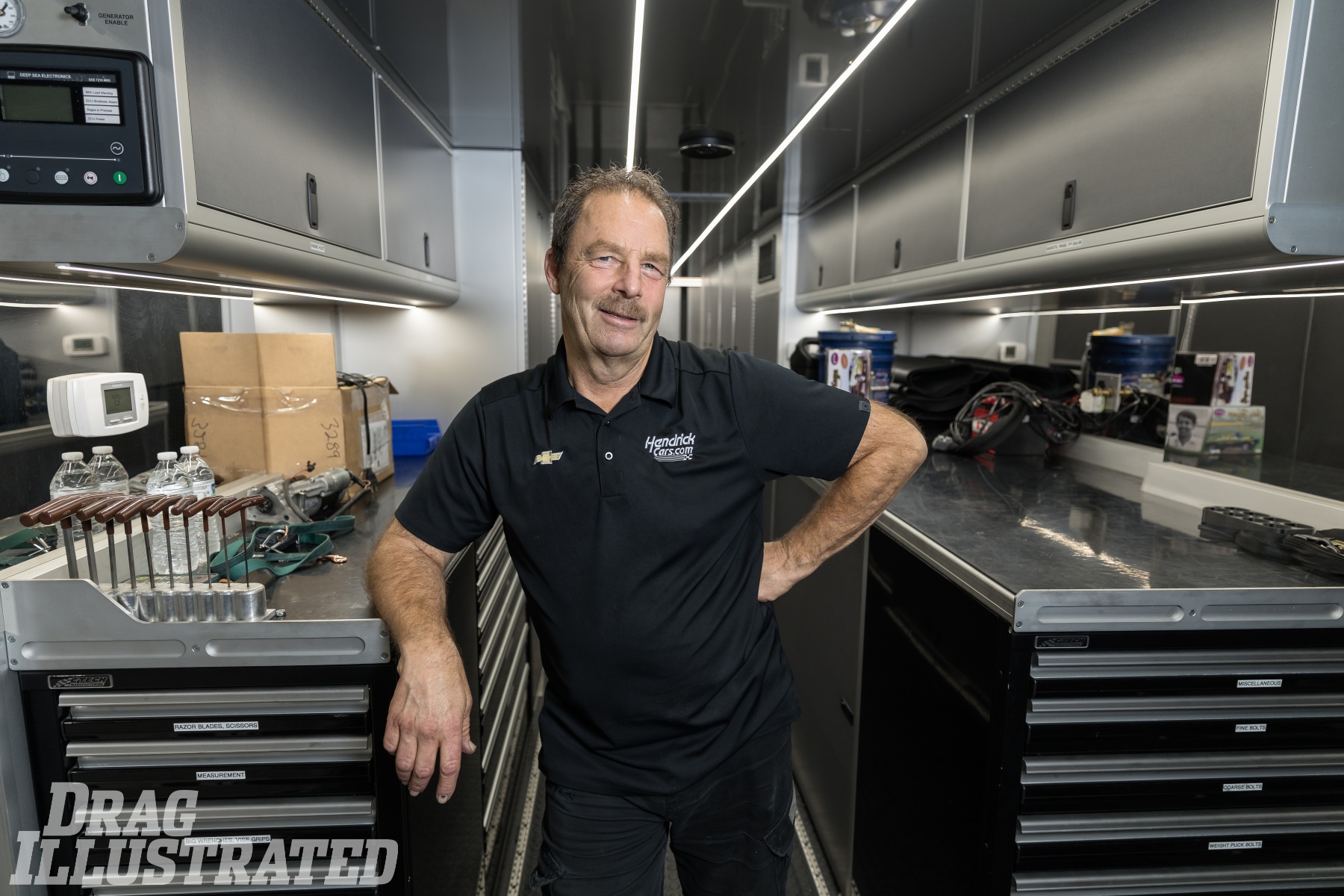
What’s something that you see in this younger generation of Pro Stock racers that excites you or maybe even makes you nervous as someone that has to race against them?
Well, there’s different ones. You’ve got a guy like Dallas Glenn who can work on every inch of the race car. He drives the transporter up and down the road, he drives the race car, and he takes his clutch in and out of the car at the racetrack. He’s his own car chief, basically.
Then you’ve got other young guns that…well, I don’t know what they do between runs on the racetrack, but they don’t work on a race car and they don’t work on stuff at the shop. They just come in and drive the car.
They’re all good in their own way. It’s a heck of a mix, a heck of a different group that we’ve got out there, but I certainly relate to the Dallas Glenns more. That’s more like what I was. I was a guy that pretty much knew every inch of the car inside and out.
If I’m betting on the future, when these young guys start winning championships and stuff like that, which is going to happen very soon, I’ll put my money on Dallas Glenn because he’s the well-rounded guy of all these newcomers out there, and I think there’s something to be said for being able to work on them as much as you are able to drive them. I think he’s got a leg up on the competition because of that. If I’m betting on the future after I get out of the way and turn it over to these young guys, I’m betting on a guy like Dallas Glenn.
You may have just answered this question in a different way, but are today’s new, young drivers at a disadvantage in a way, being able to come in and step into a proven car without having to learn some of those lessons that you or even Dallas had to learn on the way up?
Yeah, I think there’s definitely an advantage that we have that they’re not ever going to have. They can’t necessarily come back and provide a lot of feedback to the crew chiefs. We all have onboard computers in the cars, so it’s not like a driver can lie anyway, but there’s still certain things that you feel as a driver that the computer doesn’t show.
I think when you’ve been on the inside, working on the equipment and on the race cars and on the engine, there’s certain things we hear in the engine going down the racetrack that they don’t necessarily know what the difference is. If we happen to lose an engine partway down the track or a part fails, we can usually hear it. There’s an audible change, and half the time, we can get out of the throttle and save that engine. Some of these new guys, they’re not going to have that in their playbook. They’re just going to be either on the throttle all the time or it’s going to blow up, one or the other. That’s something that’s valuable.
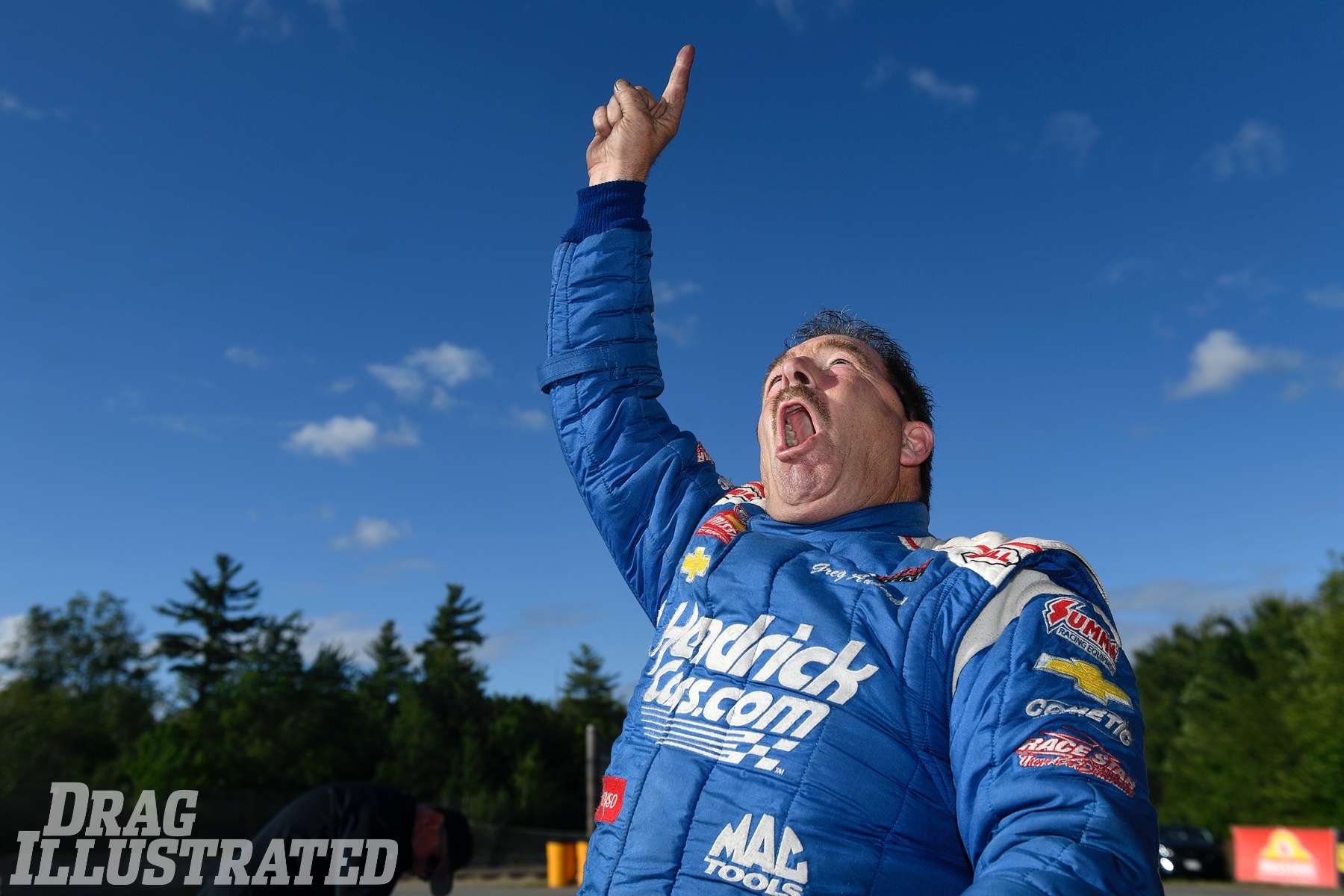
There’s probably times where it’s better where you don’t have all that experience because there’s so many things that can go through your head. When you roll into that stage beam and you’re trying to concentrate on cutting that light, there better not be anything of any kind going through your mind. You better not be talking to yourself and you better not be listening or you’re not going to cut a good light. These guys that don’t necessarily understand why the engine sounds different here or there or what the car did here or there, that’s not a problem they have. They probably can get to that concentration level of “nothing but the Christmas tree” a whole lot easier.
So there’s pluses and minuses. Obviously I’m voting for the guy that’s got the well-rounded experience because that’s me, but on the other side, I can see benefits to the other way too.
Your son, Cody, has gotten really involved over the last several years. What do you enjoy most about working with him and showing him the ropes?
He’s been around the racetrack for a lot of years and he’s certainly been a great fan and watched what his dad does, but he didn’t love drag racing at the young age that I did. He was a golfer. He wanted to golf. That’s what he wanted to do with his life, and pretty much every race we went to, he’d just leave on Friday, Saturday, and find a golf course to go to.
What I really got a kick out of – and I certainly didn’t push him at all – but I gave him the opportunity to work on the car, and I try not to be his boss. I let the car shop guys handle his daily schedule and treat him just like a normal employee. But he’s pretty much learned to do every inch of that race car just like I had to do. He’s not a guy that can only do one thing. He can now do a lot of different things. He can wear a lot of different hats. He can work on different cars, different teams. He can do different projects on the car. I love watching that growth, and I know it’s going to continue.
He definitely has an itch – he doesn’t have that burning desire yet – to drive a car, but he’s definitely got a desire. He wants to try it. And I keep saying when I finally get out of here and call it a career for me, I’m going to let him show what he can do, and I have all the confidence in the world. He’s a young kid. He’s a talented kid. He’s a natural-born athlete. I think he’s going to do great at it. I’ll look forward to that day when I get to stand on the starting line and watch him.
I’m absolutely trying not to force his hand or put any pressure on him and put a deadline on when he needs to get in a race car or do anything, but it’s going to happen someday. He’s going to take his shot at it. He’s going to either sink or swim on that just like I had to do, but I look forward to that day. I don’t think it’s that far down the road.
I’m a realist. I know that for me it gets more difficult every year to find a way to reinvent myself to try and hang with these young guys, and that’ll continue as years go on. In the back of my mind, I’ve got to be thinking in the next year or two at the most, it’s going to be that time to hand the steering wheel over. I’m definitely thinking about it. He’s definitely thinking about it. That’ll be the next chapter around here, hopefully.
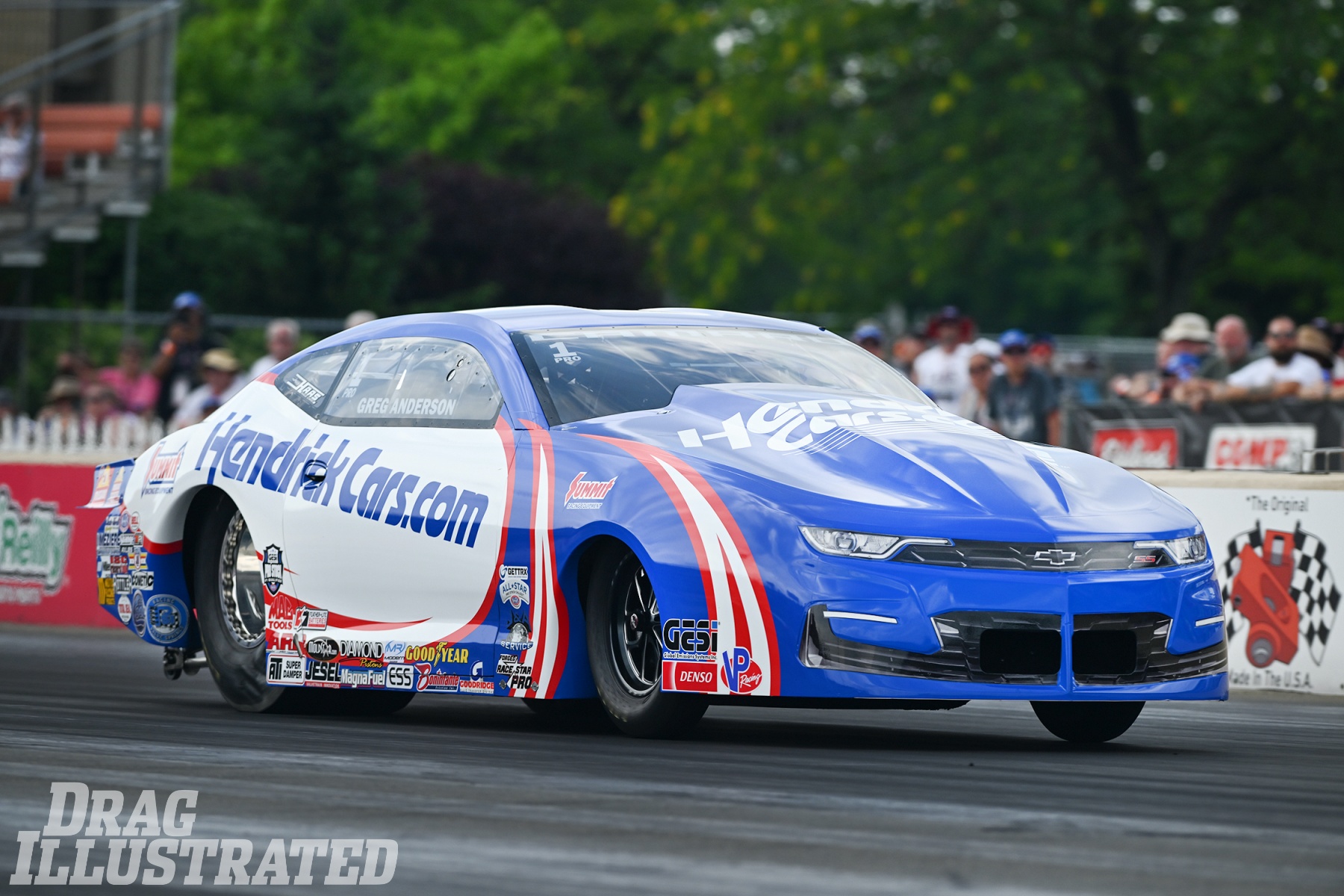
KB Titan and Elite Motorsports have had a rivalry for quite some time, but it seems to have escalated at various points this year as the Pro Stock pendulum has swung in KB Titan’s direction. What do you think that rivalry does for both teams and for the class as far as generating some interest that maybe wasn’t there in the past?
I think it’s great for the class. You don’t have to love each other to go out and race against each other. You don’t necessarily have to hate each other. You don’t have to be best buddies. You don’t have to go spend your off hours from the track together or anything. It’s OK to not be the best of buds when you go to the racetrack and try and beat somebody, because let’s be honest, even everybody that’s on my team or under my umbrella, when you roll up to that starting line, you probably better not treat them like they’re your best buddies or you’ll probably go home.
It’s OK that we have a little bit of a grudge against each other. That’s good for the class, and obviously it kind of spilled out into the public there in Bristol. We did a pretty good job of hiding it over the years. But the simple truth is yeah, we go to each race wanting to demolish that group and they go to each race wanting to demolish us, and that’s good. What people got to see there at Bristol probably made fans a little bit more engaged. Maybe we created a few enemies, maybe we’ve created a few more fans, but it moved the needle. It made you have to think about it.
I think that probably divided up some of our fan base, but that’s good for the class, I think. I think it’s a good deal. We opened up a lot of eyes that maybe we don’t necessarily love each other as groups, but that’s OK. I’m good with that. We still can be civil, and obviously you have to be to be professional about this, but both groups want to win that bad.
Don’t steal my porridge, you know what I mean? We’re fighting for our own piece of cheese and it means everything to us. This is our living. It’s how we make a living. In drag racing, there’s not a ton of money to go around for everybody. Everybody’s certainly not getting rich, so you’re all fighting for that same piece of cheese. Sometimes the emotions spill over. Yes, most of the time you try to keep a cool head about it, but if once in a while it spills over, so be it. That’s OK, and it just tells the true story. You just really want to win that bad. There’s a lot of guys and a lot of girls in this class that really, really want to win bad.
Pro Stock has seen its ups and downs over the years. What’s your take on where the class is today and where it’s going?
Well, it’s so different than it was years ago. These young guns can come in now and they can find sponsorship or find money on their own end and they can come in and they can join the Elite umbrella or the KB Titan umbrella or the McGaha umbrella and they can get great equipment and go out there, and if they have some driving talent, they can contend for wins instantly. That’s something we didn’t have years ago. That’s the new Pro Stock and that’s what I think has made it better.
I don’t know why, I don’t know how, but over the last two or three years since this has happened where you have all these people that can win, we still haven’t had that many different winners, but you look at the class from top to bottom and everybody can run within basically two hundredths, maybe three hundredths in E.T. That can be made up on the starting line every time you go out there. Everybody that qualifies in Pro Stock can win that race, and you didn’t have that years ago. I think the class is better than it’s ever been because of that.
Like I said earlier, years ago, all I had to worry about was Greg Anderson and Jason Line, making our cars fast, and now I have to worry about seven or eight of them, making them all just as fast as my car. You had to swallow your pride a little bit, and it’s just a new way. It’s the new Pro Stock and I’m good with it. I’m all right with it because I think it’s made the class better overall. I think the class is in a great place.
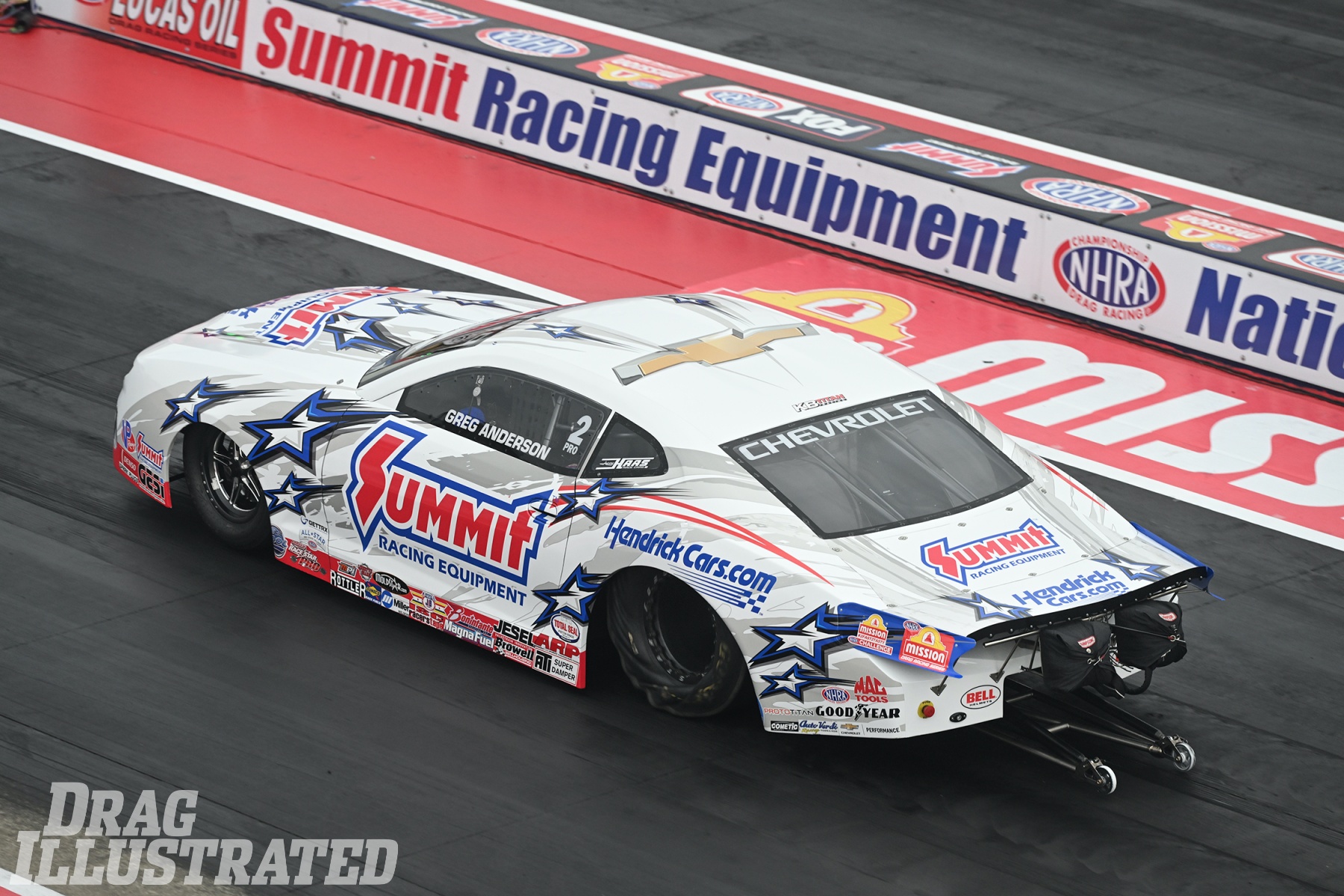
What do you say to the critics who call it “Pro Camaro”?
You hear the grumblings or whatever: “I wish it wasn’t all Chevrolet. I wish it wasn’t all Camaros. I wish it was what it used to be with Chevrolets and Mopars and Fords.” I do too. Don’t get me wrong. I do too, but I don’t have the fix for that right now. But that doesn’t mean it won’t go back to that someday. I want to keep these OEMs as involved as we can, and I still think there’s a hell of a benefit for them to be involved with this.
I’m not going to say that it won’t someday come back to that where you have at least three of the OEMs out there battling it out. I miss that. But let’s be honest, when you sit in the grandstands and you watch a Funny Car race and you see one of them says Toyota on the windshield and one of them says Ford on the windshield, can you tell the difference that that car is the Toyota, not a Ford? No. And do they have a Ford or a Toyota or GM engine in them? No, they all have the same engine in them too.
It’s still great racing. We still have great racing. I still think it’s a great class, so don’t give up on us and don’t necessarily think that it’s going to be like this forever. Five or 10 years ago, we didn’t see that it would get to this point where it is all Camaros, so you never know what 5-10 years down the road will look from now. Maybe there’ll be five different brands out there. Who knows? We’ll keep trying for that. We’ll keep digging for that.
But in the meantime, it’s still great racing and you’re really getting to see the driver more than you have ever before. I think the driver’s certainly become more important in this class than it ever was before, so that’s cool too. I think that’s what all motorsports strive for. They strive to where the equipment is close enough that the drivers decide the race, and I think it’s more so that way in this class than it’s ever been without a doubt. We’ve got that going for it. Fans love that. So don’t give up on us.
Does the class still have the same magic for you as when you started or has it kind of evolved into something entirely different?
Things have absolutely changed a bit. Back when I first started, at least in my situation when I met Ken Black, he came in and he said, “Here’s what I want you to do. Go hire who you want to hire. I’ll put you in a nice shop. I’ll put a bunch of equipment in there. We’re not going to worry about sponsorship. I’ve been fortunate in my business life and I’ve been able to make a little bit of money, and as long as we don’t spend just a crazy amount of money, it’s my hobby and I don’t mind spending a little bit of money,” so when you had that situation, you could basically race worry-free. You didn’t have to worry about paying the bills every day. You didn’t have to worry about this or that.
Over the years, that has changed where now I have to worry about all that. I have to make sure that we don’t overspend and I have to make sure we bring in the right amount of money, whether it’s from sponsorship or race car rentals or engine rentals or whatever. We have to bring in a certain amount of money or the team doesn’t build forward.
It’s a lot different than it used to be, but it’s still going strong as a class. It’s the new Pro Stock model – how to survive, how to stay out there, and that’s via all these race car rentals and engine rentals versus back when you used to be able to sign a major sponsorship that would maybe cover the nut for the whole year. You can’t do that anymore. You have to find other ways to bring in that income. So that’s what it’s done, and all those things has made it harder for me, personally, I guess, to win races because I have not only a ton of competition across the country in the other group, but I have it internally also.
So it’s just harder to win anymore, but still fun. Still having a blast with it. It probably is an even better feeling now because you know you’ve made it this much harder for yourself to win because you’ve surrounded yourself with competitors that basically have the same gun that you’ve got and it’s a whole different way of racing than I used to do. A lot more worries now, a lot more things that go into making sure you find a way to keep the team afloat, but I’m not complaining at all. I’m still very fortunate to do it and I’m happy with what we’ve got here at our race shop, with the team we’ve formed, and with the employees I’ve got that have been here for a lot of years.
I’m very proud of the group we have, and that part of being like a proud papa with all these new young drivers, that’s part of it too. I haven’t become a grandfather yet, but everybody in the world tells me it’s the best thing in life, better than having your own children. That’s a little bit how I feel with all these young drivers that I’ve taken on on my team that now go out and try to whip my ass. It’s a neat feeling and it’s a proud papa feeling.
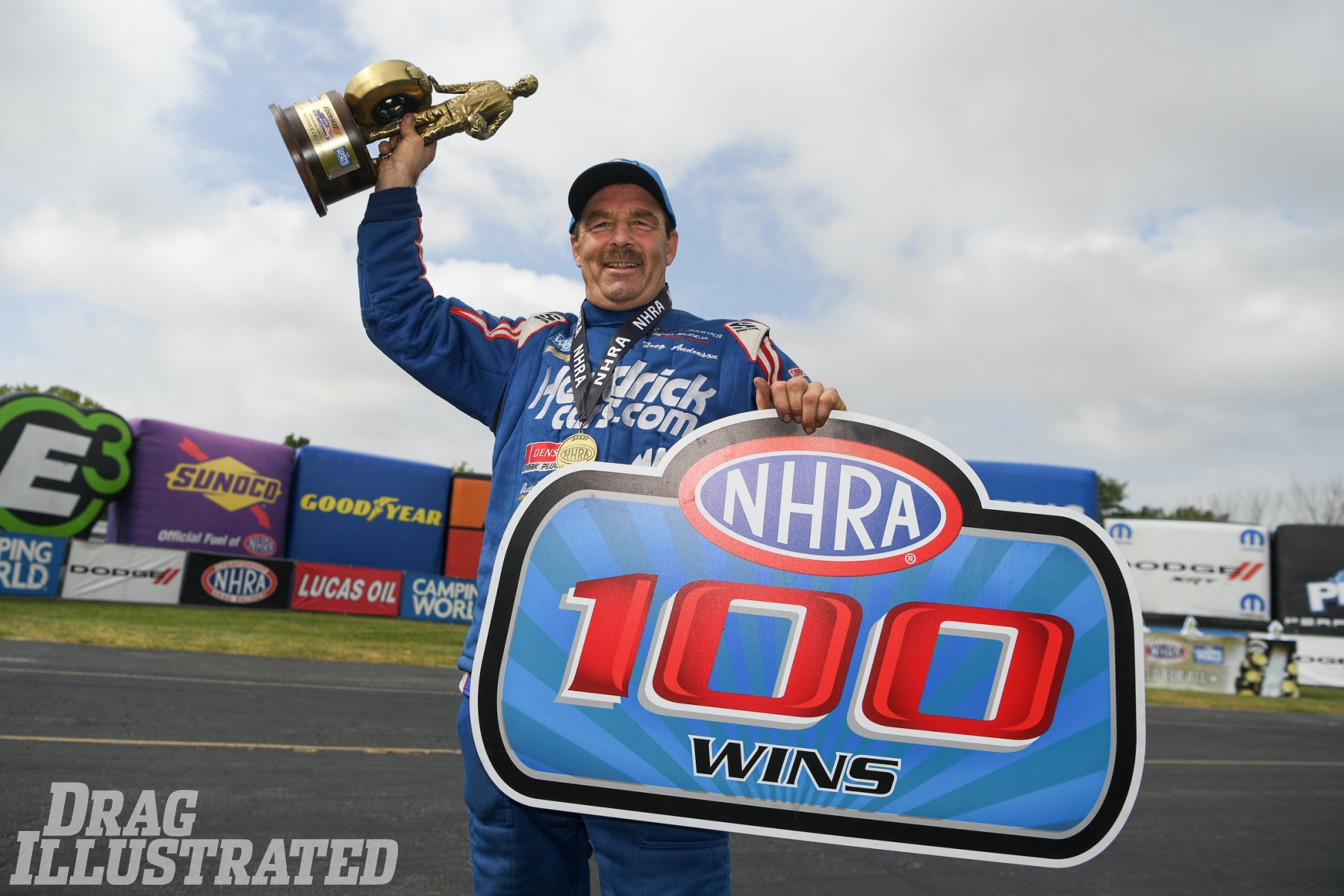
Final question here, and it’s something you’ve touched on at various points in this interview, but after all you’ve accomplished, all the boxes you’ve checked, what motivates you? What keeps you going back to the track week in and week out?
The competition, the winning, the chance to win, and the level of competition. I love the fact that, in my opinion, the level of competition is the highest it’s ever been. People ask me, “Why do you race this class? It’s probably the hardest class to win,” and that’s why. That’s 100% why I do it. I don’t get that big of a thrill out of driving a race car, although I’ll miss it when I stop driving them because I still enjoy driving them, but it’s not because of the thrill of the speed or whatever. I’ve certainly gotten used to that over the years.
I go into every Sunday thinking, “Man, I just hope to hell I can get past first round.” And then, “Can I get past second round?” I don’t feel like a favorite when I go out there. I don’t feel like there’s a race where I have this race in hand if I don’t screw it up. There’s never a feeling like that anymore. You live in fear every Sunday anymore with all these guns, and every round is like a final round. It’s crazy out there.
But I love that. I love the level of the competition. That’s why I race Pro Stock. The other classes, don’t get me wrong, as far as Top Fuel and Funny Car, they’ve come a long way too towards where they now have eight to 10 guys that can win any given Sunday. But in Pro Stock, in my opinion, we have 14 to 16 guys or girls that can win any given Sunday. It’s still a step above competition-level-wise, and that’s 100% what I love about it and why I race this class, period.
This story was originally published on October 23, 2025. 
The post DI Interview: The Many Hats of Greg Anderson first appeared on Drag Illustrated.
